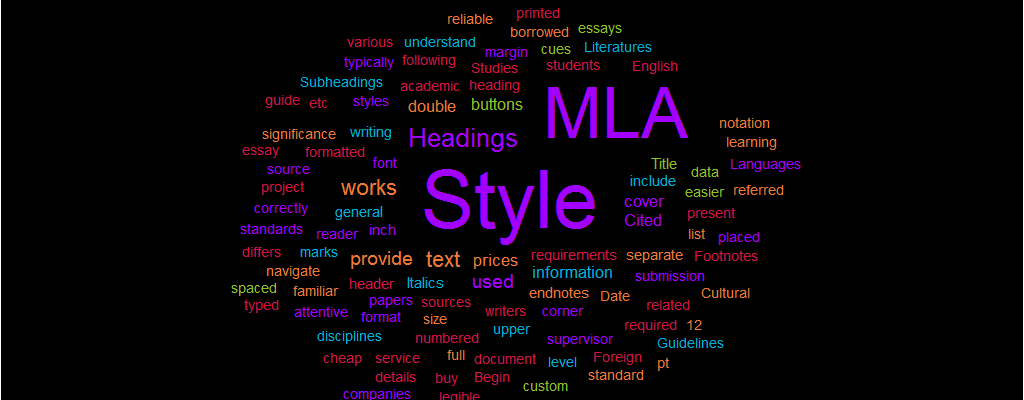Guide for Students on Using MLA Academic Format
Publication Date:

By using MLA style correctly, you make it easier for the reader to navigate and understand the text through familiar cues referred to sources and borrowed data. This style is typically used by writers and students in such disciplines as English Studies, Foreign Languages and Literatures, Cultural Studies, etc. You can order an academic paper formatted in any academic style from a reliable essay writing service.
Begin with learning more about general requirements for this style along with various standards for the notation that MLA writers should use. Since MLA differs from other writing styles, you have to be very attentive to details.
Below, you can find information about general requirements for papers formatted in MLA style. Use our guide to format your paper, if you do not want to buy cheap essays from custom writing companies.
General Guidelines
- The paper has to be printed out on a standard white paper.
- The text should be double-spaced and typed with any legible font. Use the font size 12 pt. Make sure that the regular and italic type styles contrast enough.
- Leave no more than one space between the punctuation marks and words.
- The margins should be 1 inch on each side of the paper.
- Every paragraph has to be indented one-half inch from the left margin.
- The pages must be numbered in the upper right corner, one-half inch from the top and flush with the right margin. Also, such a header has to include your last name before the page number (e.g., Smith 2). Your supervisor may ask you not to include this header on the first page.
- Italics should be used to indicate the titles of longer works.
- Emphasis should only be used if it is absolutely necessary.
- The endnotes have to be presented on a separate page before the Works Cited page.
First Page
In MLA style papers, students are not required to create a separate cover page. Instead, they must provide a heading.
If, however, your teacher asks you to provide a separate cover page, you have to include the following information:
- University name
- Title of paper
- Your full name
- Course name and number
- Professor’s name
- Date of submission
If you are not asked to write the cover page, start with the heading. In the upper left corner of the first page, provide the following information:
- Your full name
- Your supervisor’s name
- Course name
- Date of submission
Double-space this text. After these four lines, double-space again and center the title with no styling.
If other works are mentioned in the title, use quotation marks and/or italics, just as you would in the text.
Headings and Subheadings
These are aimed to make your document better organized, especially if it is quite long.
The different “levels” of headings refer to the order of significance. For example, in the research paper, all chapter headings will be “first-level headings,” while sub-sections will be “second-level headings,” and so on.
There are no certain requirements related to the formatting of headings and subheadings. The only thing you should remember is being consistent. Generally, boldface indicates greater significance, and italics can be used for subordinate headings.
Citations
Each time you cite or paraphrase anything from another source, provide an in-text citation. Do not forget to provide a reference in the Works Cited list.
Footnotes and Endnotes
Footnotes can be used to direct the reader to other sources that present more information that is not vital for your project but is related to the topic. They should be numbered in superscript and placed at the bottom of the page.
Or, you can use endnotes, that must be listed at the very end of the document.
Both options can be created automatically in Word.
Works Cited
The Works Cited list has to be placed at the end of the paper and must present every source referenced throughout the project.
The format of this section follows most rules as the rest of the paper, such as font size, the application of double spacing, and the inclusion of the header.
Besides, it is required to use hanging indents for entries that cover more than one line of the text and to end each entry with a period.